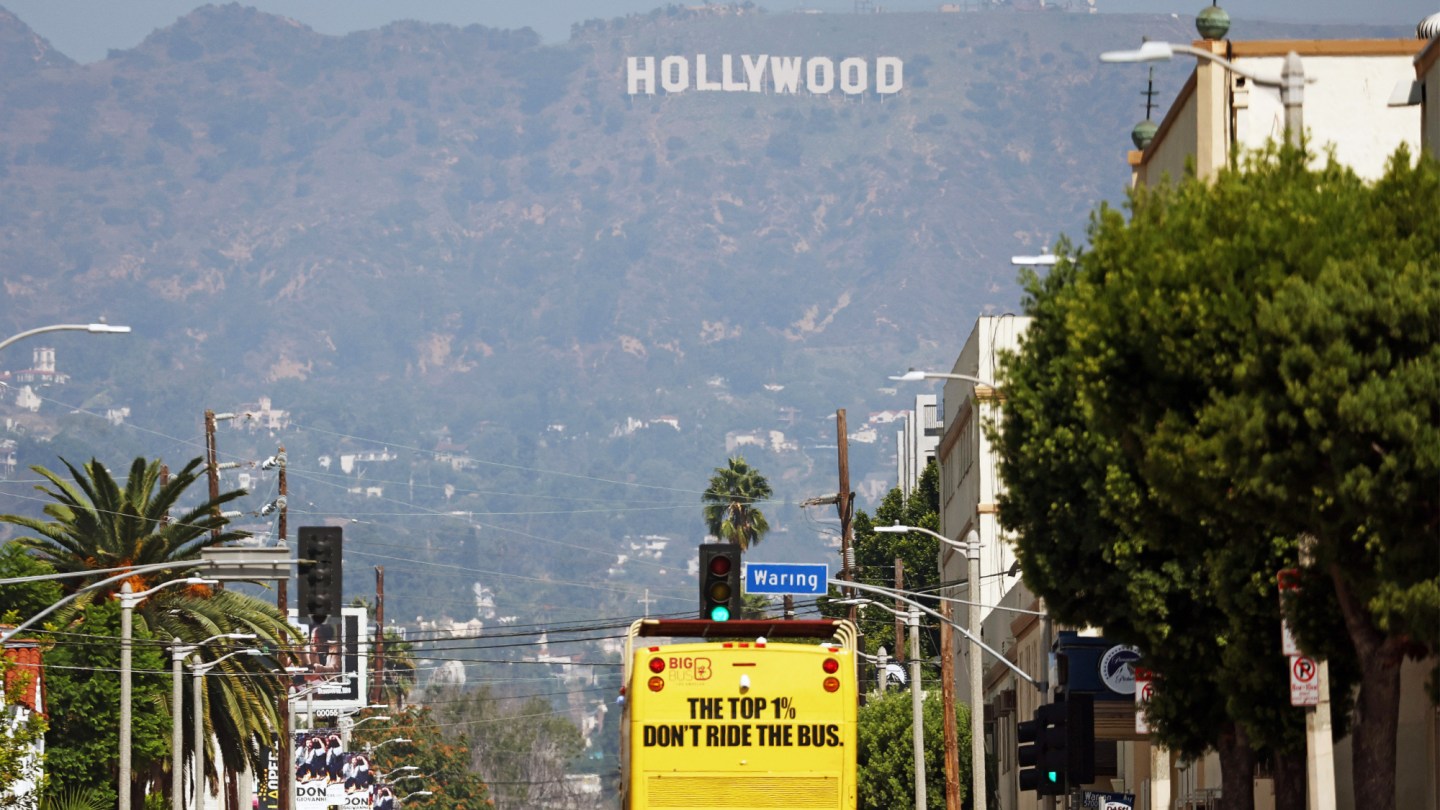MasterChef. Supergirl. The Kelly Clarkson Show. These productions all initially filmed in California but were convinced to leave at least in part due to more lucrative tax credits in others regions. Now, as runaway production and Hollywood cost-cutting threatens the state’s hold on the film and television business, Gov. Gavin Newsom is stepping in.
An early budget proposal looks to vastly increase California’s current cap for a program that provides tax relief to producers across the business from $330 million to $750 million a year, Newsom is set to reveal on Sunday. The expansion would shower as much as $3.75 billion in tax credits to the industry over five years starting in 2025.
If passed, the subsidy would be the most generous offered by any state except Georgia, which doesn’t have a ceiling on the amount it gives to productions per year. That includes New York, Hollywood’s second most-popular destination that California has increasingly been exchanging blows in a fight for productions amid a highly-competitive incentives race to attract Hollywood dollars.
“This means that film production can stay,” says Los Angeles mayor Karen Bass. “It means that all of the jobs that would be lost, because they they would go to another state or overseas, would stay here.”
Further changes to the program have yet to be finalized. Potential amendments could affect the maximum amount a single production can receive in tax relief and what types of expenditures qualify for incentives.
“We’ll be taking into consideration a range of additions and potential fixes to the existing program,” says Colleen Bell, director of the California Film Commission, which oversees film and TV production throughout the state. “Everyone is in the business of luring production away from California. We have to invest in our lead and preserve jobs for Californians so they can do the jobs they love to do and put paychecks in their pockets.”
The move arrives after months of entertainment industry workers in the Los Angeles area speaking out about a lack of employment opportunities in the iconic production hub. In the wake of the 2023 writers’ and actors’ strikes, local crew members and creatives described an anemic return to production as major companies sought to slash costs and the era of Peak TV came to a screeching halt.
For some of these workers, the financial difficulties during the strikes and their aftermath have been significant: people have sold homes, lived out of cars and RVs and frequented food banks, with some leaving the business entirely for other fields. Increasing tax incentives to productions across the state emerged as a proposed remedy for the situation in June during labor negotiations for crew members who belong to the Los Angeles-area Hollywood Basic Crafts union coalition.
A month later, Bass formed a taskforce to promote recovery of the industry in Los Angeles after production was disrupted the pandemic, strikes and industry contraction. Among its top priorities have been expanding the state’s tax film and TV tax credit program.
“This was the number one item on their agenda,” Bass says.
New data released on Oct. 16 shows that filming in L.A. is approaching historically low levels, with the three-month period from July to September seeing the fewest number of shoot days this year. The figure even falls short of shooting in the region during the same time last year, when the industry was halted by the work stoppage. Among the biggest causes for concern is a steep drop in unscripted TV production. Last quarter, shooting for the category fell roughly 56 percent compared to the same period last year. Filming for TV shows, long an anchor of filming in the area, continues to decline as every category of scripted production trails historical norms.
Directors Guild of America associate national executive director and western executive director Rebecca Rhine stresses that production in the state is currently in “real peril.” She adds that the governor’s proposal “provides an important acknowledgement that this is an industry that we want to keep in California.”
According to Rhine, the DGA and other industry unions have “spent a lot of time” talking to Newsom’s administration about their production concerns — “the high level of unemployment, the amount of work leaving the country, the inability to compete effectively with incentives elsewhere,” she says. “And I think that the governor was listening.” Rhine emphasizes that the film industry provides middle-class jobs with benefits to industry workers and brings work to various local vendors and indirect beneficiaries in the state, from dry cleaning services to florists.
Newsom’s proposal aims to mitigate one of the major issues with California’s film and TV tax incentive program: Too many productions applying for the subsidies. These projects, when rejected, leave for other states and countries. Since 2020, the state lost $1.6 billion in spending from productions that applied for but didn’t receive a tax credit, according to the California Film Commission.
“It can’t be denied that one of the primary considerations for where projects shoot is whether they receive a tax credit,” Bell says. “Our program has been oversubscribed for a long time. We have this cap so we’ve had to turn away qualified productions that then go and take their projects elsewhere, along with jobs for Californians.”
With tax credits, productions may more easily be able to stomach higher costs for labor and shooting permits, among others things, in California compared to other regions.
Still, the state will continue to face stiff competition. The 20 percent base credit offered by California is lower than most competitive film hubs, including New York, New Mexico and the U.K. It’s also the only major production hub that bars any portion of above-the-line costs, like salaries for actors, directors and producers from qualifying for incentives. It’s an idiosyncrasy that the U.K. and Canada, another filming hotspot that has the added advantage of beneficial exchange rates and lower labor costs, have leveraged to become premier destinations for features.
California also doesn’t offer a standalone tax credit for visual effects. Several productions outsource postproduction work to countries that offer generous subsidies on this front, resulting in many VFX companies based in the state creating offshoots overseas.
Canada and Australia offer the most lucrative tax relief on this front. Productions can get at least 30 percent of their post, digital and VFX spend back in those regions. In March, the U.K. unveiled a five percent bump and removal of the 80 percent cap for VFX costs in the country to stay competitive.
In addition to increasing the cap, the California Film Commission has cited the lack of a tax credit solely for VFX work to the governor’s office. “We’re in it to win it,” Bell says.
Compared to California, other regions have weathered industry contraction better. Some data indicates that competing international film hubs are seeing flat, or in some cases slightly rising, levels of filming. Last quarter, the U.K. and Canada each saw more live-action, scripted titles with budgets of at least $10 million actively filming within their borders, per data from industry intelligence platform ProdPro.
And it’s not just areas outside of the U.S. either. New York has proved more resilient than California, seeing about 75 percent of 2022 shooting levels.








